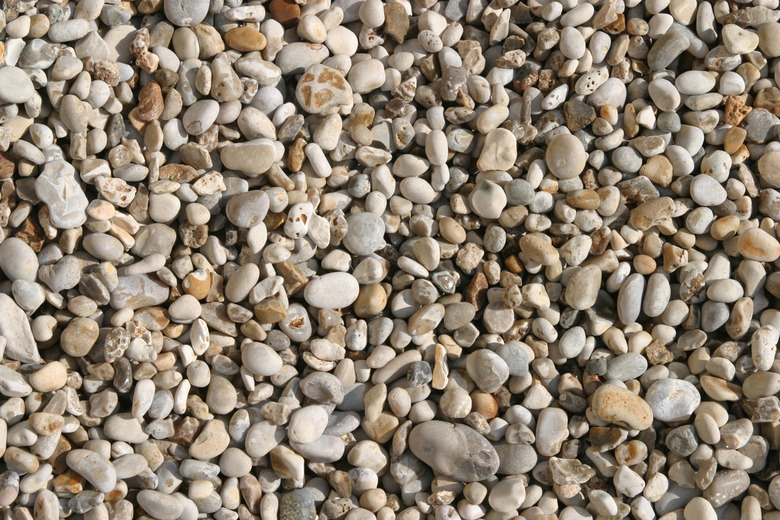Type Of Gravel For Bedding
When it comes to covering plant beds, people often turn immediately to mulch. If, however, you want to use a different material, then consider gravel, an option that can help you create different looks that set off your flowering and non-flowering plants. Before you head to the store, learn about the different kinds of gravel that are available for bedding and how to choose and use them.
Step 1
A wide assortment of gravel is available for use as bedding. Pea gravel consists of rounded stones about the size of a pea. Crushed gravel looks like stones that were hammered into fragments with jagged edges. River rocks are smooth, sometimes shiny and larger than pea gravel. River rocks and crushed gravel are commonly used in Japanese rock gardens. Terazzo chips, made from crushed marble, add a touch of class to any bed. Decomposed granite, which is granite that has broken down over millions of years and forms a crushed gravel, is available in a multitude of colors.
Step 2
- A wide assortment of gravel is available for use as bedding.
- River rocks are smooth, sometimes shiny and larger than pea gravel.
Several Purposes
Step 1
Gravel bedding serves primarily the same purpose as wood or synthetic mulch: When laid over the soil of a flowerbed, it helps the soil retain moisture and deters the growth of weeds. Gravel also heats up in sunlight and retains that heat, which helps to warm the soil and sustain plants during cool, overnight temperatures. In addition, gravel provides considerable aesthetic diversity due to its many sizes, shapes and colors.
Placement Considerations
Step 1
Because gravel is heavy and can impede the growth of desired seed sprouts and bulbs trying to push through the soil, as it does with weeds, it should be placed around only established plants. Dump the gravel into a wheelbarrow, and gently shovel the gravel into the beds, taking care not to disturb established plants. Create a depth of about 2 inches with the gravel for coverage that prevents soil from showing through the stones.
Edging Choices
Step 1
Installing edging to hold the gravel in place is a sensible step because the gravel can be dislodged easily. For example, heavy rains and digging animals can displace the gravel from beds into lawn and walkways. Gravel that relocates into grass can become a deadly missile when struck by the blades of a lawnmower. Gravel on a sidewalk can cause passersby to stumble or otherwise lose their footing. Edging options include plastic fencing supported by spikes inserted into the ground, plastic rolls, bricks, cement pavers, larger stones, landscape timbers and railroad ties.
Step 2
- Gravel bedding serves primarily the same purpose as wood or synthetic mulch: When laid over the soil of a flowerbed, it helps the soil retain moisture and deters the growth of weeds.
